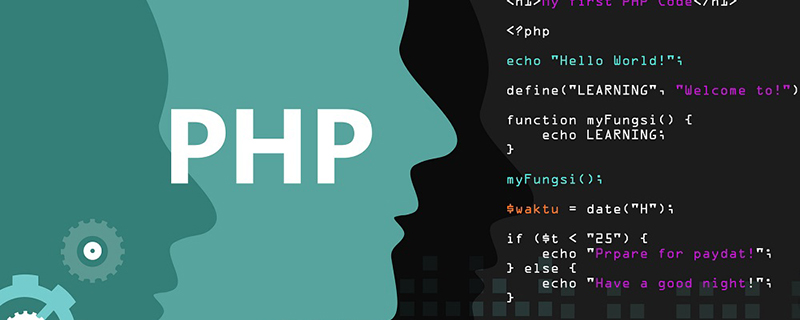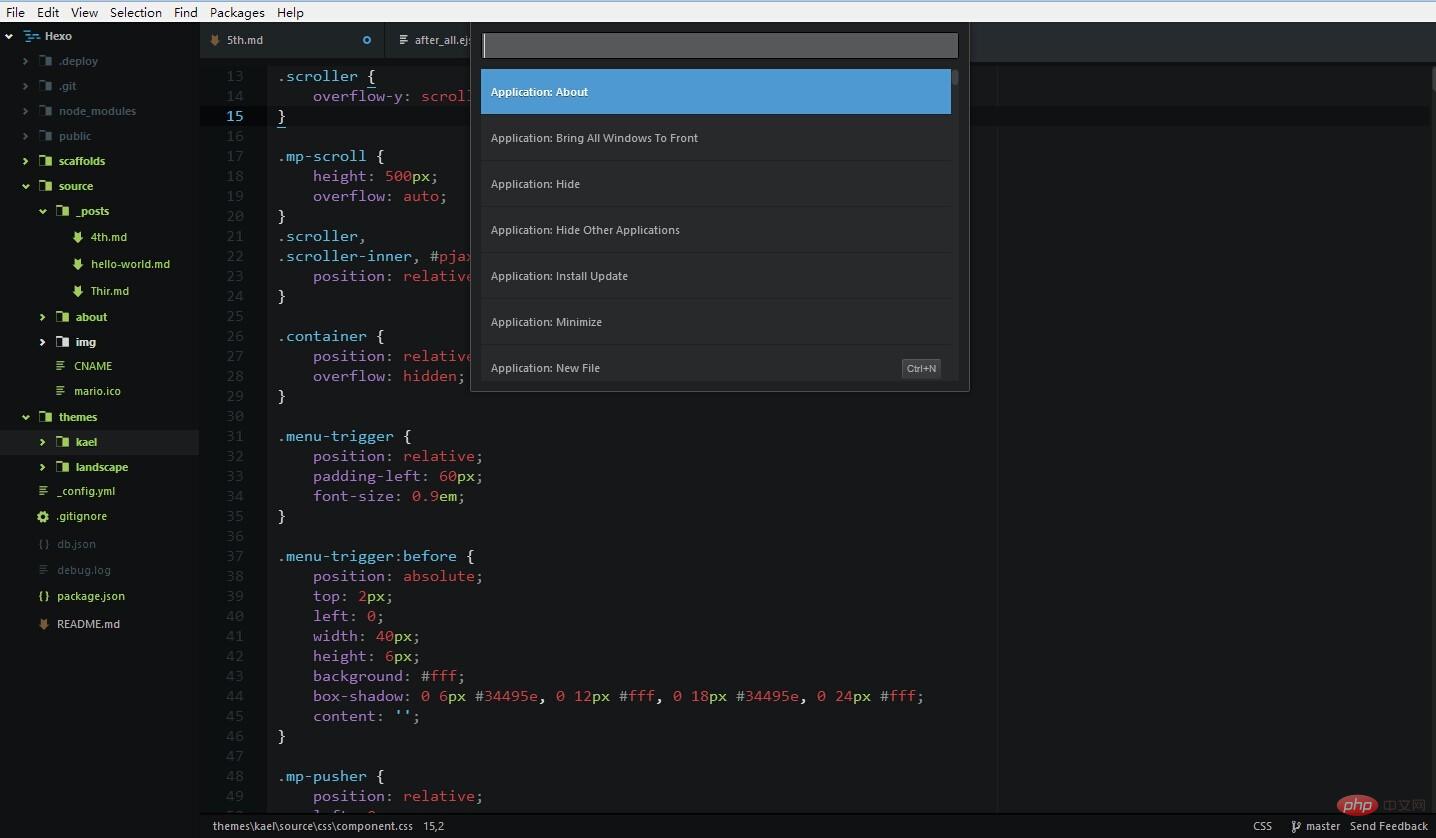
This article will introduce you to common PHP development tools. It has certain reference value. Friends in need can refer to it. I hope it will be helpful to everyone.


NetBeans is a powerful PHP IDE that supports multiple languages, including English , Japanese, Russian, Portuguese and Simplified Chinese.
It supports mainstream frameworks, such as Zend, Doctrine, Smarty and Symfony2, and also supports Laravel through laravel-ide-helper. It also supports other frameworks including Yii, CakePHP, FuelPHP and WordPress.
Some key features make NetBeans at the forefront of IDEs, such as automatic generation of get\set methods, code templates, automatic code completion, smart prompts, quick repairs and refactorings. Other basic features include code folding and formatting, try/catch auto-completion and rectangular selection, etc.
If you want to debug, you can easily use the command line or xDebug to debug locally or online. Web development also includes many JavaScript, HTML and CSS files, and NetBeans supports IDEs for these files. All these features make NetBeans a robust open source PHP IDE.
The next version of NetBeans will be released in August 2016, and will fully support PHP7. You can download the current version from the official website of NetBeans - netbeans.org.

PHPStorm is a powerful PHP IDE. (IntelliJ IDEA can also be used as a PHP IDE after installing the php plug-in)
PHPStorm supports a variety of mainstream frameworks, such as Symfony, Zend, Yii, CakePHP, and Laravel. Mainstream CMS frameworks support Druoal, Magento, WordPress, etc.
The biggest highlight of PHPStrorm is its good support for front-end languages. It supports CSS, Sass, HTML5, CoffeeScript, JavaScript, Stylus, Less, etc., and integrates code refactoring for some front-end languages. Debugging and unit testing capabilities.
As a development tool, PHPStrom integrates various functions such as version control system, database, composer, online deployment, REST client and command line tools.
You can debug programs locally or online through Zend Debugger and Xdebug. .
You can click to download PHPStorm.
Official website download address: https://www.jetbrains.com/phpstorm/download/#section=windows.
Sublime Text 3 is a lightweight, feature-rich editor that supports multiple platforms. It mainly relies on plug-ins and packages to extend functionality.
There are many free PHP plug-ins on the Internet that turn Sublime into an elegant PHP IDE. This includes: package management, Sublime PHP companion, xDebug client, PHPCS, CodIntel, Simple PHPUnit and PHPDoc.
Sublime official address - sublimetext.com.
Eclipse PDT is another open source editor.
Compared with PHPStorm and Zend Studio, the biggest advantage of Eclipse PDT is that it can be used without registering a license. If you are an old Eclipse enthusiast, you will feel extremely familiar using it.
Eclipse PDT has syntax highlighting, code assistance, code formatting, refactoring, code templates, code navigation, PHP debugging, syntax verification and other functions.
Eclipse PDT supports MAC, Windows and Linux platforms - eclipse.org/pdt/.

VIM is an open source editor based on the GPL license. It is free to download and use. VIM has quite a high popularity among developers. Before Facebook engineers used Hack, they used VIM to write PHP programs.
VIM is a modular, lightweight editor, and if you like to program just with the keyboard, then it is perfect for you.
On Linux, VIM may be the most suitable editor. Similar to Sublime, it requires plugins to become a PHP IDE.

Zend Studio is a classic PHP IDE from Zend Company.
Zend Studio supports Windows, OSX and Linux platforms, and supports PHP7. It has many features, including -
Faster performance for validation, retrieval and searching of PHP code.
Integrated Zend Debugger, Xdebug and Z-Ray debugging.
Supports the Eclipse plug-in ecosystem.
Supports Docker and Git Flow.
Supports PHP, JavaScript, CSS, and HTML intelligent programming.
Supports Microsoft Azure and Amazon AWS deployments.
Assist in PHP7-friendly migration and seamless integration with Zend server.
#A powerful and interesting feature of Zend is that it supports mobile APP development based on PHP back-end services.

Atom is a very "trendy" editor.
Atom is a highly customized editor and supports Windows, OS X, Debian Linux (Ubuntu), Red Hat Linux and Fedora 22 platforms.
To make Atom a PHP IDE, you need to download many extension packages. For example: hyperclick-php, php-cs-fixer, php-integrator-base, linter-php, atom-autocomplete-php, etc. Here is a list of what you may need to install - https://atom.io/packages/search?q=php.
PHPED, owned by NuSphere, is also a piece of history Long-established editor.
*The new version of PHPED already supports PHP7 and includes frameworks such as Laravel, Yii, Symfony, etc., and provides content management systems similar to Joomla and WordPress. *The feature of the new version is the addition of local and remote unit testing capabilities.
In general, PHPER is a development tool for full-stack developers. It provides JavaScript debugging and LESS and CSS preprocessing, and of course everything you need for PHP.
But I have to say that I think Zend and PHPStorm are better than PHPED in terms of customer support, documentation and version management.
PHP Designer is another good IDE that provides rapid development tools for PHP, JavaScript, CSS and HTML. This IDE is only available on Windows, so skip it if you are a Mac or Linux user.
Cloud 9 is a cloud IDE for almost all programming languages. In terms of PHP support, it supports real-time code debugging capabilities.
Cloud 9 provides free workspaces and private workspaces, but to get more features, you need to pay for a trial.
Recommended learning: php video tutorial
The above is the detailed content of What are the commonly used development tools for PHP?. For more information, please follow other related articles on the PHP Chinese website!
 php development tools
php development tools
 How to connect broadband to server
How to connect broadband to server
 How to configure jsp virtual space
How to configure jsp virtual space
 What types of files can be identified based on
What types of files can be identified based on
 How to deal with slow computer lag and slow response
How to deal with slow computer lag and slow response
 app full name
app full name
 visible means
visible means
 Solutions to unknown software exception exceptions in computer applications
Solutions to unknown software exception exceptions in computer applications
 Usage of typedef in c language
Usage of typedef in c language